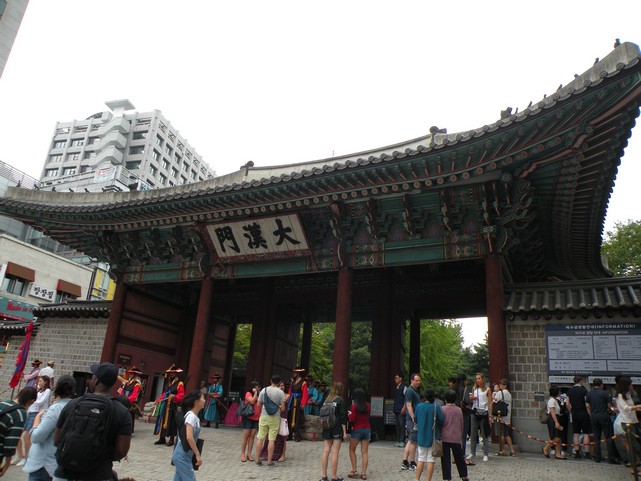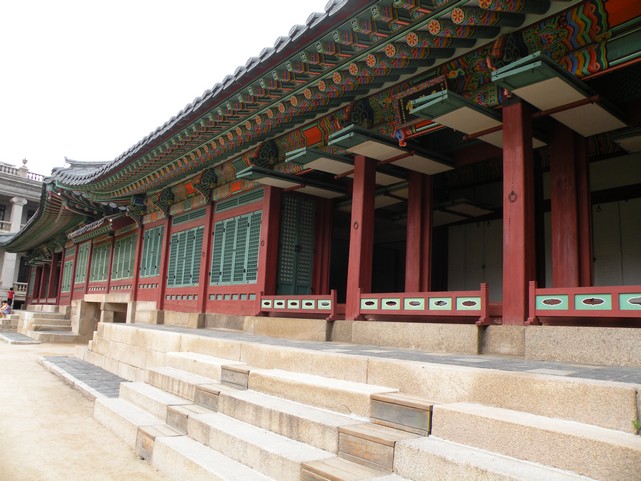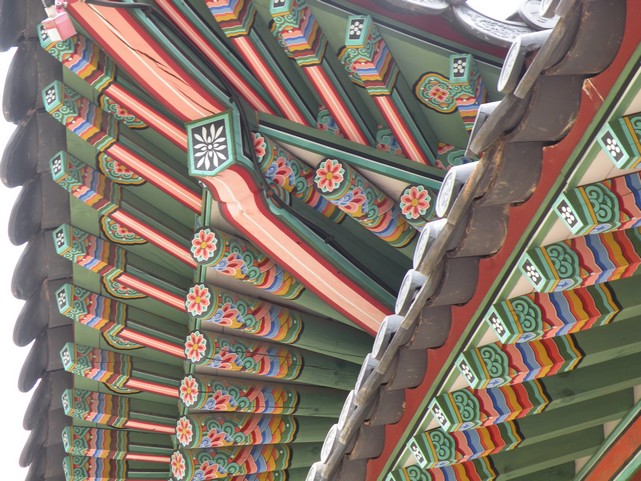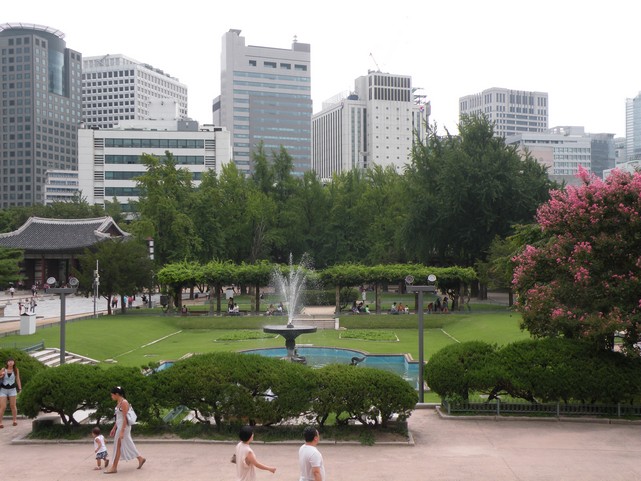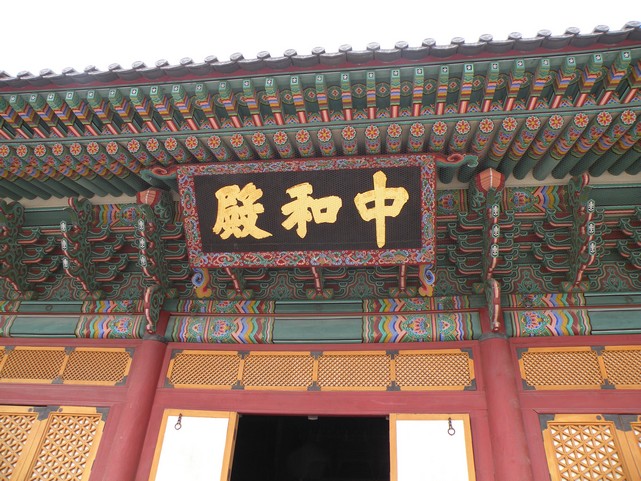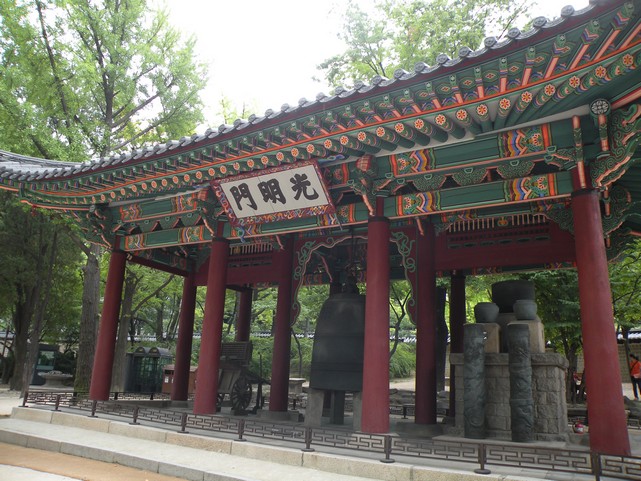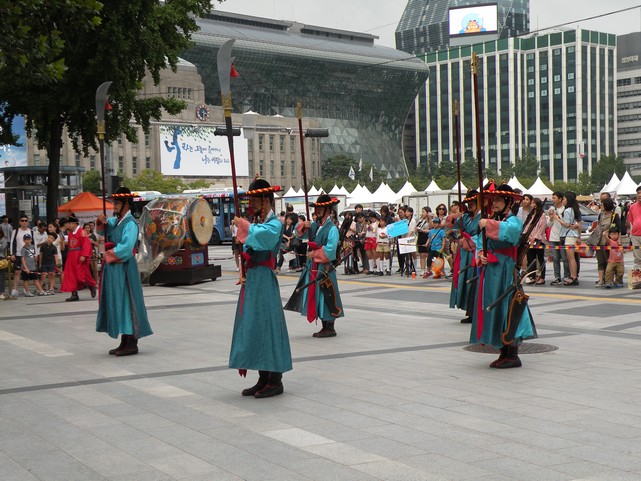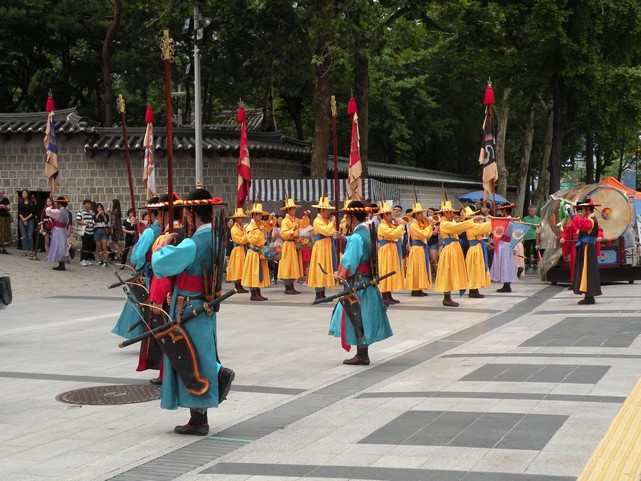In 222 days I travelled to 13 different countries. It all started with my exchange semester in Seoul at the end of August 2016. Afterwards, I went from Beijing to Bali and ended with a stop-over in the United Arab Emirates. During my travels I learned a lot about backpacking, other cultures, living on a budget, and finding new friends.
It all started in January 2016, when I applied to study abroad in South Korea and already half a year later, I was sitting on a plane to Seoul. I remember how I chose the country of the exchange programme: I wanted it to be one which would be completely different from every country I have ever been to. I basically wanted to get a culture shock – another language, language script, food, culture, architecture, and history. And when I arrived in Seoul it came with a lot of challenges but also with a lot of excitement. For example, at first, the food was way too spicy for me. I upset my stomach so much that I could only eat soft bread for a week. I also remember how my friend and I got kicked out (or actually we weren’t even allowed to enter) of a restaurant by an Ajumma (it is a Korean word to describe middle-aged women) because we couldn’t speak Korean fluently – but no worries I am pretty sure this was a unique experience. But still, it was love at first sight. I loved Korea from the first moment on. You can read more about my first impressions in my blog post University, Hangul & Samul Nori – My first week in Seoul.
The fear of travelling alone
But Korea was only the first part of my travels to Asia. Back in Berlin, I met a German couple at a party, Anni and Alex who were in Seoul themselves. They told me about their semester abroad and how they travelled Asia afterwards. The winter semester in Korea ends in mid of December, the summer semester in Germany starts in mid of April – this makes almost four months of free time in between. I was really hooked from this chance but also a bit worried. I felt a bit jealous that they had each other to explore all these adventures together. Would I really be brave enough to travel for four months on my own? – far from home, far from anyone I know, and without the language skills? Also travelling alone as a woman was part of my (self-)doubts. This was for sure a step outside of my comfort zone. But it didn’t take long until I realised that this was my chance to see a bit more of the world and that the excitement about this possibility was way bigger than any fear I ever felt.
Travelling is not a race
On New Year’s Eve 2016, I started the second part of my journey. I took a flight to Beijing, from there I continued to Hong Kong, did a day trip to Macau and flew to Vietnam. In the beginning, I felt I had to see as much as possible. I had only two weeks in Vietnam. My days were packed with activities; I only stayed for one or two nights in each place and travelled on night buses to save the days (and the money). After Vietnam I realised, this is not how backpacking works and how you travel long-term. Being all day outside and exploring is great for a two weeks vacation but for another three months, this would be way too exhausting. This was the time I decided to slow down. This beginner’s mistake was also the main reason why I travelled to so many countries in such a short period of time. It was a combination of naivety, a lack of knowledge, and also the easiest reason: I just couldn’t decide which countries I should head to first. In the end, I had to learn on the road to pick a few destinations and rather take more time to explore them than to miss half of it in the rush.
On a budget – 10 $ a day
Besides that fast travelling is exhausting, it is also more expensive. First of all, you have a smaller time frame to find a suiting mode of transport and secondly, obviously, you spend more money on entrance fees if you want to squeeze everything into one day.
I had a limited budget of 10 $ a day, including accommodation and food. It was (and is) definitely possible to travel on a budget through South East Asia. I always chose the cheapest dormitory rooms in hostels or did Couchsurfing, I ate a lot of street food, travelled by public transport, and asked the hostel staff for insider tips. But I also allowed myself to have one more expensive activity or trip in every country. I did kayaking between the 4,000 islands of Laos, went snorkelling and visited a Full Moon party in Thailand, went to the Forbidden City in Beijing, as well as the famous Angkor Wat temples in Cambodia, and the Gardens by the Bay in Singapore. My travels ended after three months at Bali. From there I went back to Seoul and with a short stop-over in the United Arab Emirates, back to Berlin.
During my semester abroad in Seoul, I travelled for four days to Tokyo, and also visited different places in South Korea as the borderline to North Korea, the island Jeju, the second biggest city Busan and an island in a river – Nami Island. On New Year’s Eve, I took a flight to Beijing and from there I started my travels through South East Asia – to Hong Kong, Macau, Vietnam, Laos, Cambodia, Thailand, Malaysia, Singapore, Indonesia and on my way back from Korea to the United Arab Emirates.
Alone but never lonely
In the beginning, one of my fears was that I would be alone and maybe even lonely on my travels. But anyone who already backpacked and stayed in dormitories knows you are never alone, especially if you do not want to. The backpacker community is huge. In every hostel, you meet new inspiring people from all over the world. I spent hours listing to travel stories, visited sights together, I even took a motorcycle ride with other backpackers, went to parties together, and learned a lot about different cultures. But not only the backpackers were open, but also all the local people I met during the time. I talked to the staff from my hostels and homestays, used hangouts to get in contact with locals who were interested in meeting, and Couchsurfing to get another chance to meet new people and learn more about other cultures. One of my favourite memories is, when I stayed with Ratha and his family in Siem Reap (read more here: Couchsurfing in Cambodia) or with Stella in Macau – she is like the sweetest even if she forced me to try my first chicken feet (I am not a fan, so sorry). Also how I met Lan in Hoi An, she worked in the homestay I slept for two nights. She was super lovely. One day, when I was still figuring out what to do, she brought me some of the food she had cooked for the staff. She had made rice with meat and vegetables. Especially the sauce was really tasty.
It was very inspiring to meet all these people during my travels, listen to their stories, their lives, their cultures, and their goals in life. Some of them were already since a few years on the move. Travelling is the opposite of being lonely; you will rather have a few more friends after your trip.
For now, this is all I want to tell you about Asia. Everything else will come later – piece by piece. So hang on and read about all my crazy, funny and adventurous stories from Asia.
First written on Monday, May 22th, 2017, you have read the blog post 222 Days of Asia – backpacking & culture shock in 13 countries on My Travel Journal-Blog.




























 We were in the Namsangol Hanok Village. The entry is free. This village shows again the combination out of traditional and modern life in Korea, around the beautiful houses are skyscraper. I was really surprised, how small the rooms and houses were. At the entrance gates are everywhere warnings that you should pay attention because the gates are so low. Even for me, it was a problem (and I really don’t know many people who are smaller than me). The architecture is totally incredible and beautiful. You will feel like you travelled back in time. The location is so nice that also many fresh married couples come to the Villages to take their wedding pictures.
We were in the Namsangol Hanok Village. The entry is free. This village shows again the combination out of traditional and modern life in Korea, around the beautiful houses are skyscraper. I was really surprised, how small the rooms and houses were. At the entrance gates are everywhere warnings that you should pay attention because the gates are so low. Even for me, it was a problem (and I really don’t know many people who are smaller than me). The architecture is totally incredible and beautiful. You will feel like you travelled back in time. The location is so nice that also many fresh married couples come to the Villages to take their wedding pictures.




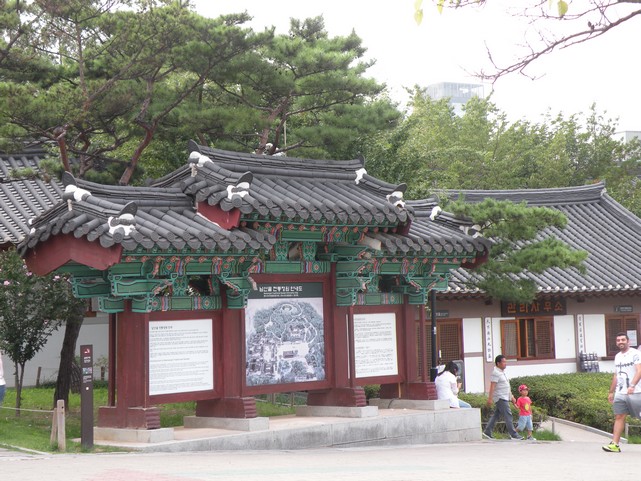

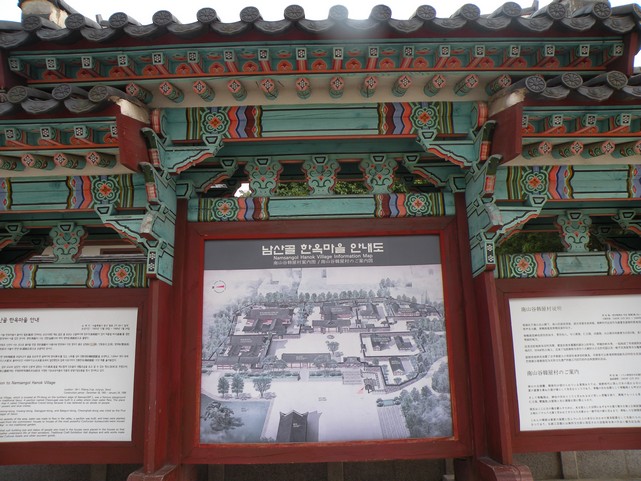





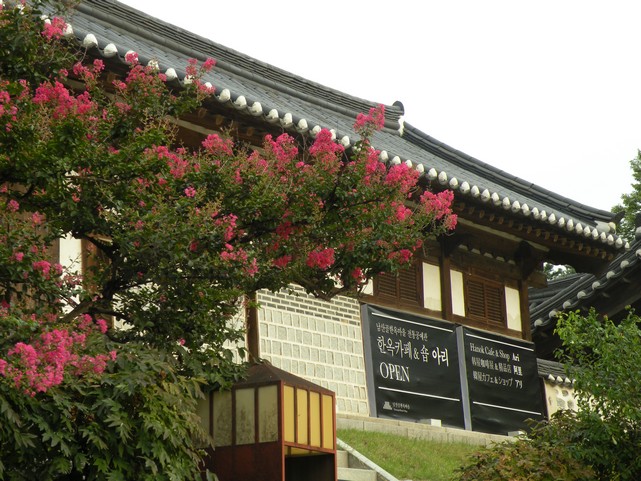

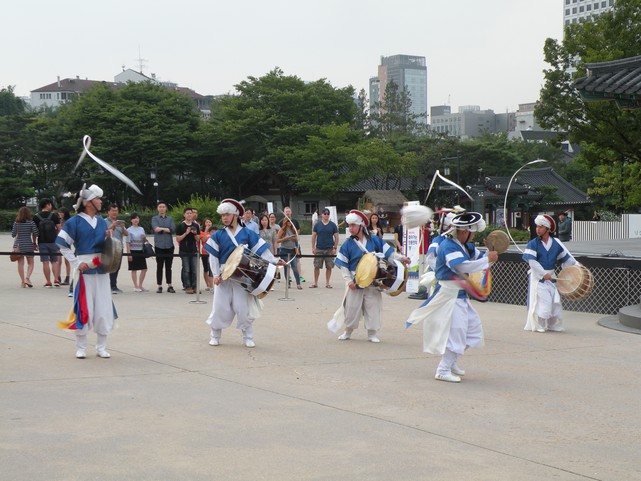



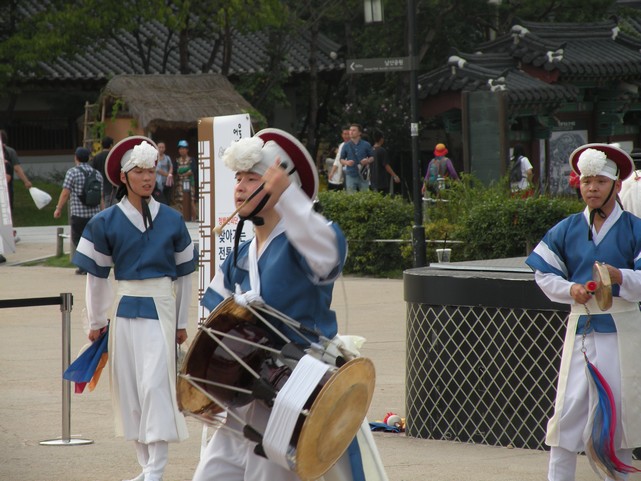

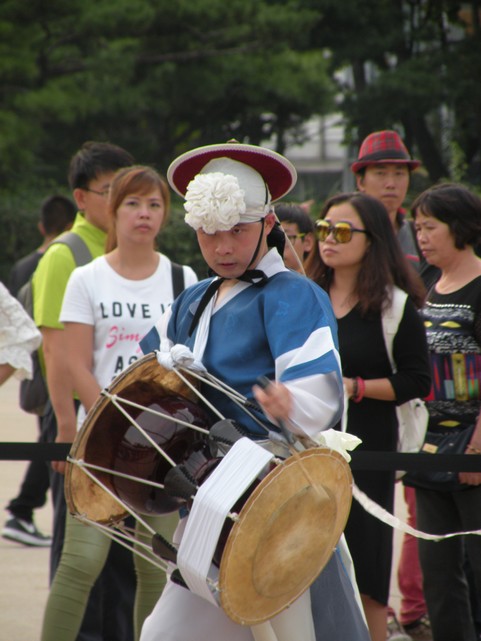

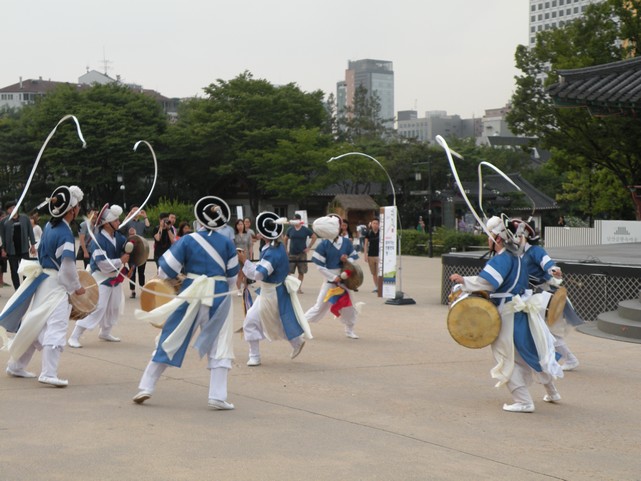









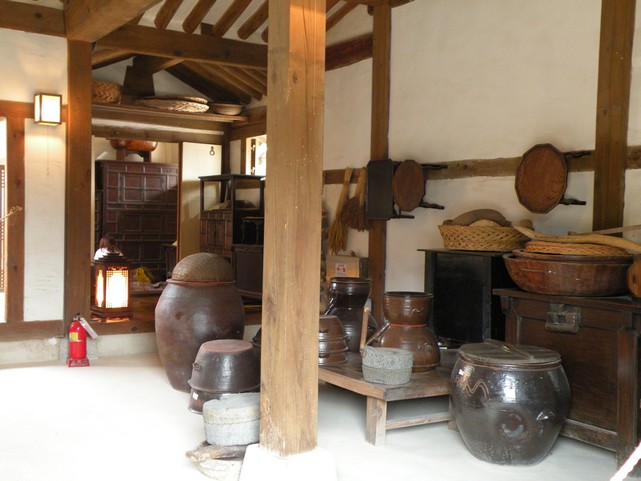





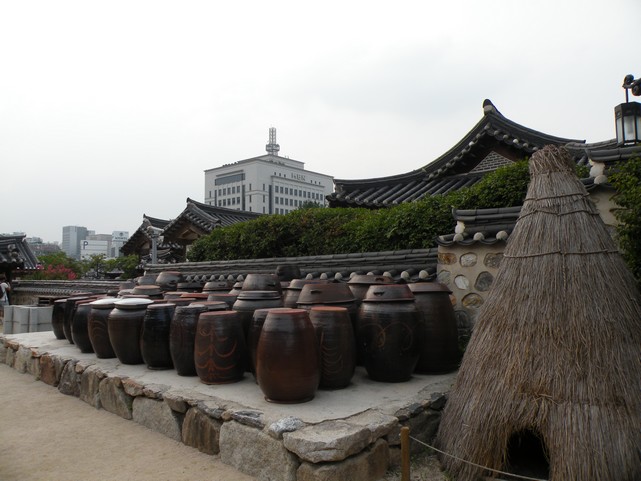















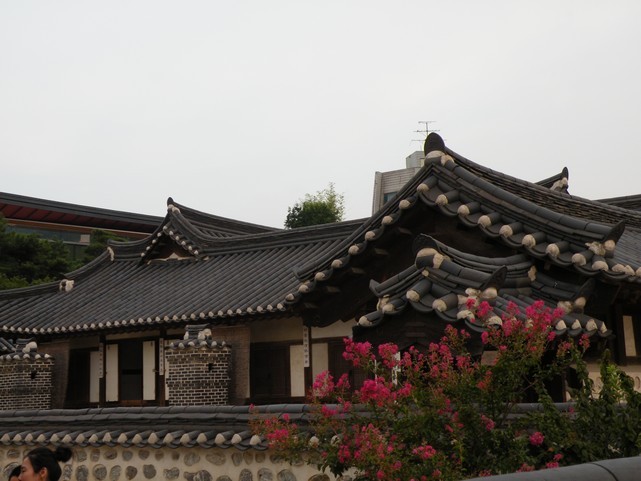

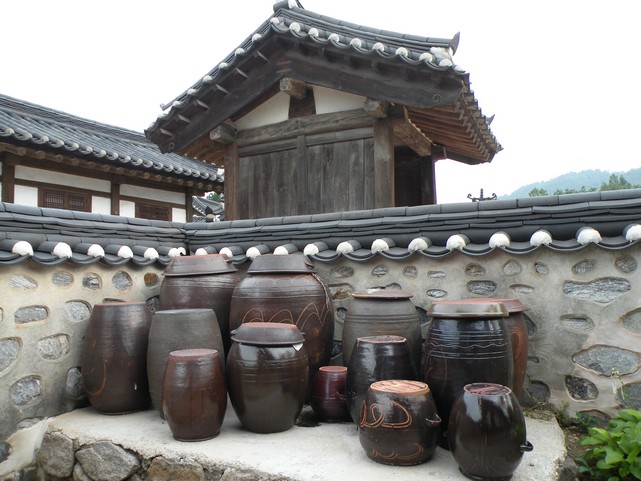

















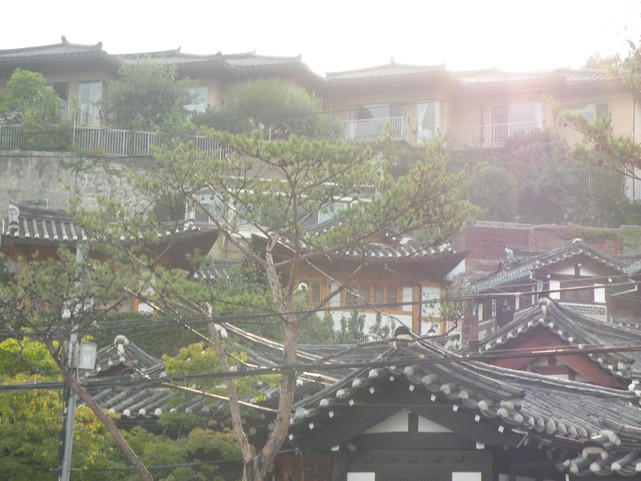



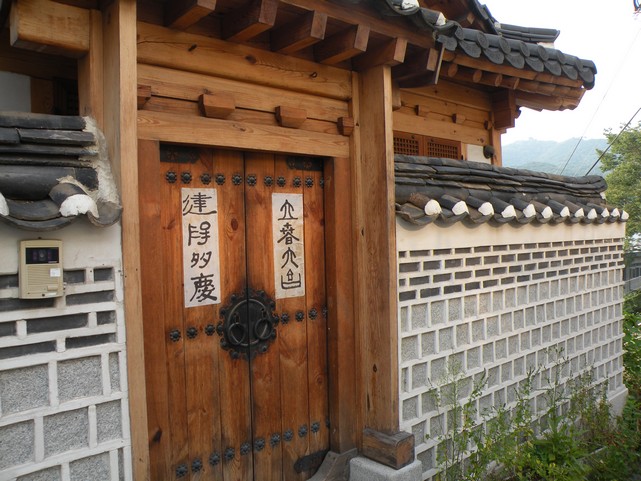

 One of the most important holidays in South Korea is Chuseok (
One of the most important holidays in South Korea is Chuseok (



